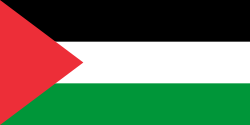 |
|---|

The following is a list of cities in the Gaza Strip, which is divided into five governorates and twenty-five municipalities.
 |
|---|

The following is a list of cities in the Gaza Strip, which is divided into five governorates and twenty-five municipalities.
After the 1995 Interim Agreements, the PNA took control of civil affairs in both designated Areas, A and B where ultimately all Palestinian population centers are located (except those within the municipal borders of East Jerusalem). Israeli Defense Forces became responsible for security in Area B. The Palestinian Central Bureau of Statistics took its first official census in 1997, and has not taken one since, however they have used provisional estimates to determine the current population. [1] The most current estimate was in 2006. Hamas took control of the Gaza Strip, following the Battle of Gaza (2007) and functions as a de facto administration in the area.
The following is a list of cities in the Gaza Strip, their governorates, their specific jurisdictions and their provisional populations as of 2006 by the PCBS.
| Common name | Arabic Name | Governorate | Jurisdiction | Population (2007) | Population (2017) |
|---|---|---|---|---|---|
| Bani Suheila | بني سهيلا | Khan Yunis | Area A | 31,118 | 41,439 |
| Beit Hanoun | بيت حانون | North Gaza | Area A | 37,351 | 52,237 |
| Beit Lahiya | بيت لاهيا | North Gaza | Area A | 63,213 | 89,838 |
| Deir al-Balah | دير البلح | Deir al-Balah | Area A | 53,148 | 75,132 |
| Gaza City | غزة | Gaza | Area A | 438,690 | 590,481 |
| Jabalia | جباليا | North Gaza | Area A | 120,859 | 172,704 |
| Khan Yunis | خان يونس | Khan Yunis | Area A | 140,046 | 205,125 |
| Rafah | رفح | Rafah | Area A | 119,763 | 171,899 |


Municipalities in the Gaza Strip include: